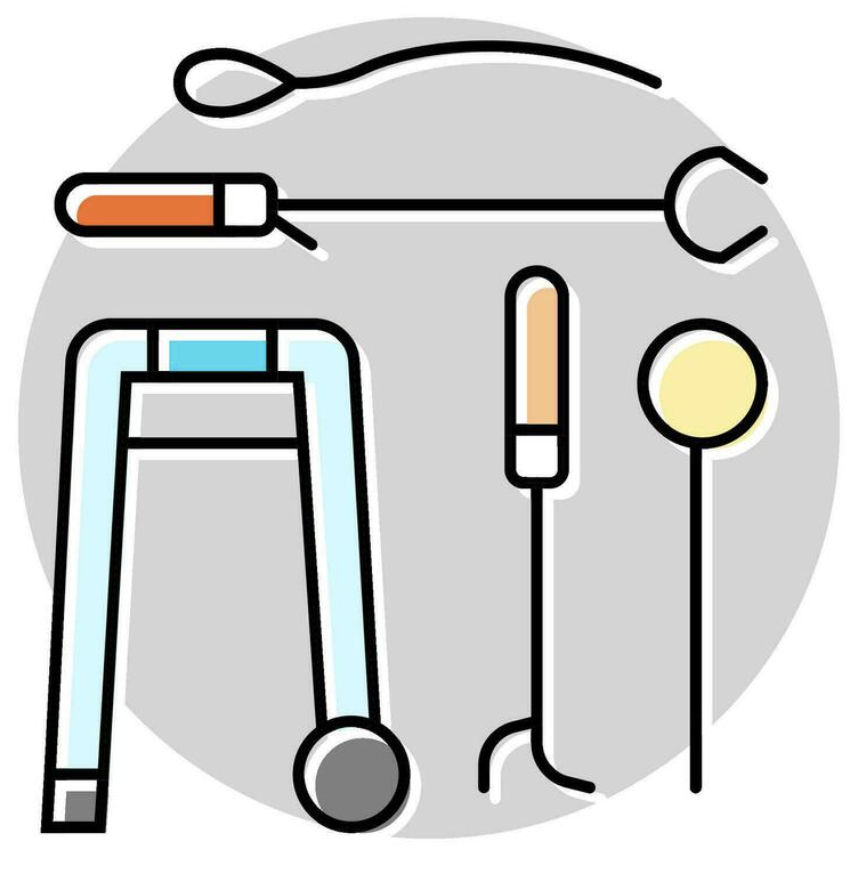Common Adaptive Tools for Bathing & Showering in FOP
People with Fibrodysplasia Ossificans Progressiva (FOP) often face restrictions in shoulder, elbow, hip, and spine mobility, making traditional bathing setups difficult or unsafe. The most helpful tools usually focus on reach assistance, stability, seated bathing, and reduced strain on fused joints.
Shower & Bath Seating
Shower chairs, transfer benches, and bath lifts are commonly used items for people with FOP. They reduce the need to stand, bend, or transfer precariously. These devices are especially helpful when hip, spine, or knee range is limited, or when stability is a concern. They can also help conserve energy and keep other bathing items within reach if upper body range of motion is impacted.
Examples of shower and bath seating found in the Ability Toolbox Guidebook:
- Shower chairs or benches – Padded, height-adjustable, with or without backs.
- Transfer benches – Allow entering the tub while seated, minimizing leg lifting.
- Tilt-in-space shower commode chairs – For people with very limited mobility or fused hips/spine.
- Wall-mounted fold-down seats – Helpful in smaller showers.
Safety & Stability Accessories
Because falls are especially dangerous for people with FOP, reducing fall risk in the bathroom is very important. Non-slip mats, grab bars, and support poles prevent slips, assist in positioning, and reduce risks.
Examples of safety and stability accessories found in the Ability Toolbox Guidebook:
- Permanent grab bars near tub, toilet, and shower entrance
- Vertical and diagonal bar arrangements to support limited shoulder motion
- Non-slip floors, bath mats, and traction strips
Extended-Reach & Long-Handled Tools
To avoid excessive arm elevation, twisting, or overreaching, or to compensate when range of motion is limited, long-handled tools promote independence in the bathroom. These tools help with cleaning areas like legs, back,and feet without needing to raise the arms overhead or bend at the waist.
Examples of extended-reach and long-handled tools found in the Ability Toolbox Guidebook:
- Long-handled sponges/loofahs
- Extended-handled washcloth wands
- Shampoo and conditioner brushes with reach extenders
- Long-handed razor holders
Accessibility & Ergonomic Features
Flexibility is essential when mobility is limited. Ergonomic designs can help to reduce strain and simplify the bathing process.
Examples of accessibility and ergonomic features found in the Ability Toolbox Guidebook:
- Adjustable brackets or holders for shower heads, placed at reachable heights based on seated or standing posture.
- Lighter materials and easy-to-operate controls, e.g., shower heads with easy switch or button control, long flexible hoses.
- Handheld shower sprayers
- Wall-mounted soap/shampoo dispensers
- Touchless or pump-based containers
- Pre-lathered body wipes for no-rinse cleaning

